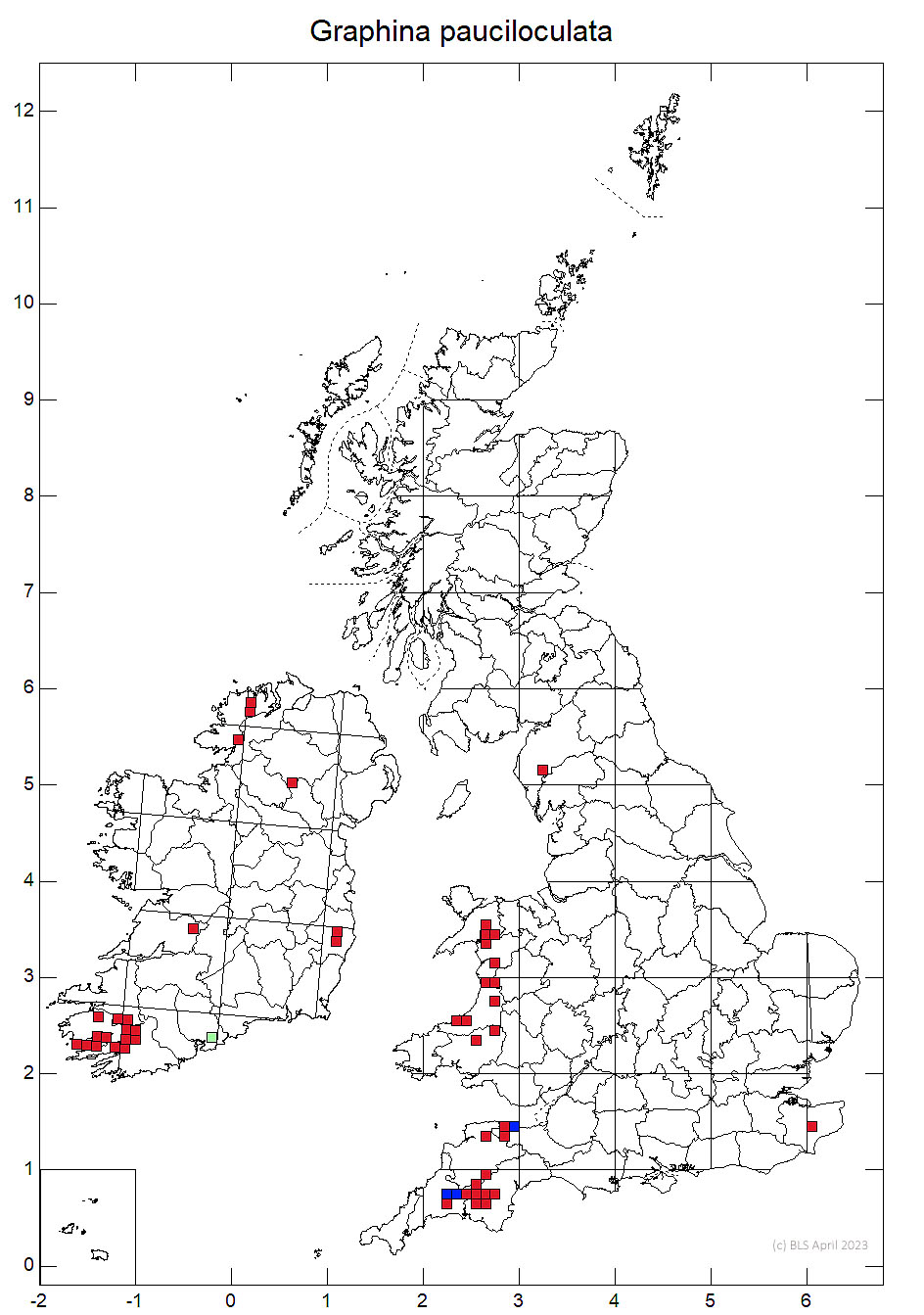A small crustose lichen, which under the hand lens (x10) resembles a depauperate G.ruiziana but with much smaller, stumpy lirellae, forming tight, gnarled 'knots' of contiguous fruits in clustered groups. Individual lirellae are sessile, with smooth unfurrowed margins (cf. young Graphis elegans) and a persistently narrow, slit-like disc. However, with the naked eye in the field its immediate form can resemble other similarly sized species with clustered fruits, such as some Arthothelium species, but the lirellae are prouder and not flush with the bark surface, as is the case in Arthothelium.
Confined to the smooth bark, mainly on branches, of broadleaved trees in very sheltered ancient woodland and old willow carr in hyperoceanic high rainfall areas (>127cm over >180 rain days/annum) in the west of the British Isles. Its phorophytes include Corylus avellana, Ilex aquifolium and Quercus petraea. At one site in Wales it was found growing on smooth bark areas on the trunk of Tilia cordata. Sites are typically within sound of running water, very moist, consistently humid, but fairly well lit and the species does not tolerate heavy shade. It is markedly calcifuge, occurring on leached acid bark.
Endemic to the British Isles. S.W. England, S. Ireland, C. & N.W. Wales.
| Location | Grid Reference | Last Rec'd | Recorder | SSSI |
| Cardigan: Hafod (Allt Dihanog) | SN762726 | 2009 | A.D. Hale | Yes |
| Cardigan: Pontrhydygroes | SN737727 | 2002 | S.P. Chambers | No |
| Merioneth: Afon Dulas | SH777100 | 1999 | S.P. Chambers | No |
Chambers, S.P. (2003). Site Dossiers for the UK BAP lichens Biatoridium monasteriense, Cladonia peziziformis, Graphina pauciloculata and Schismatomma graphidioides. CCW Contract Science Report No. 586
- Log in to post comments

